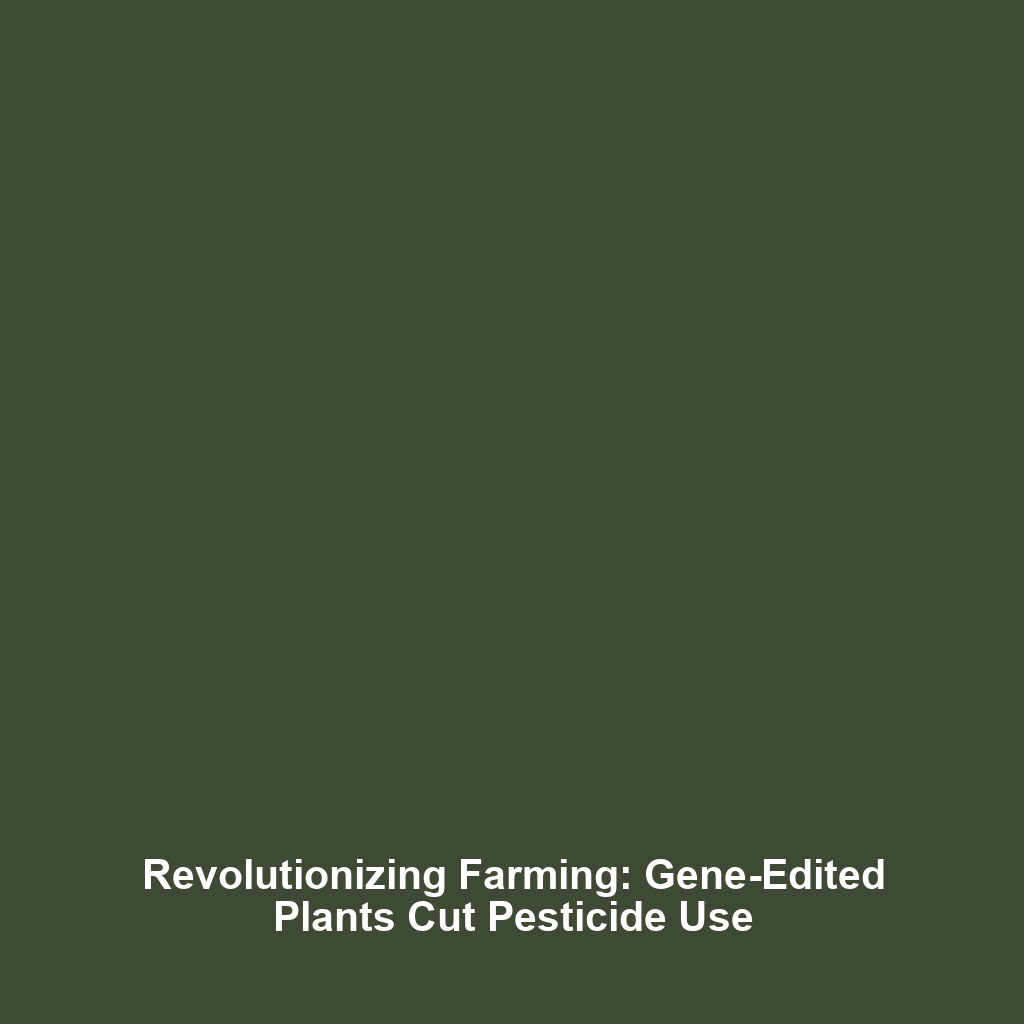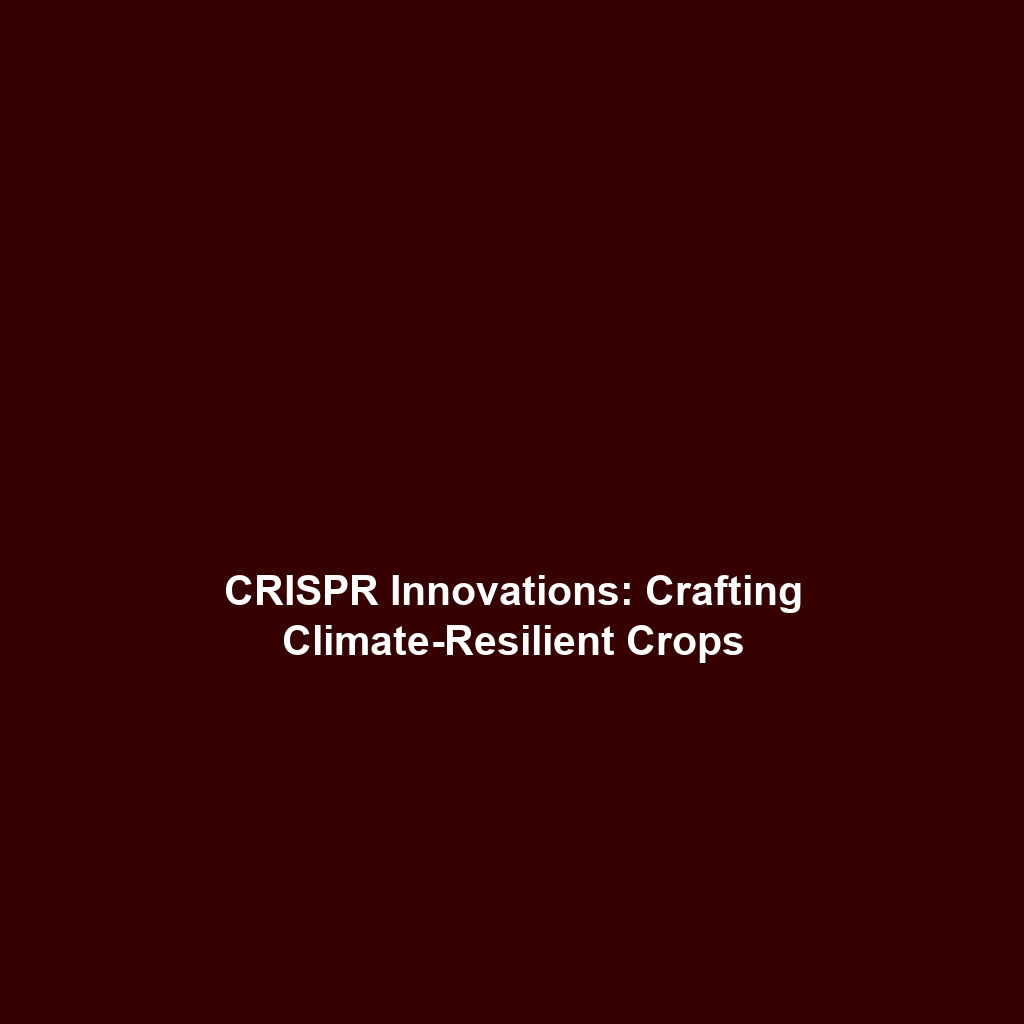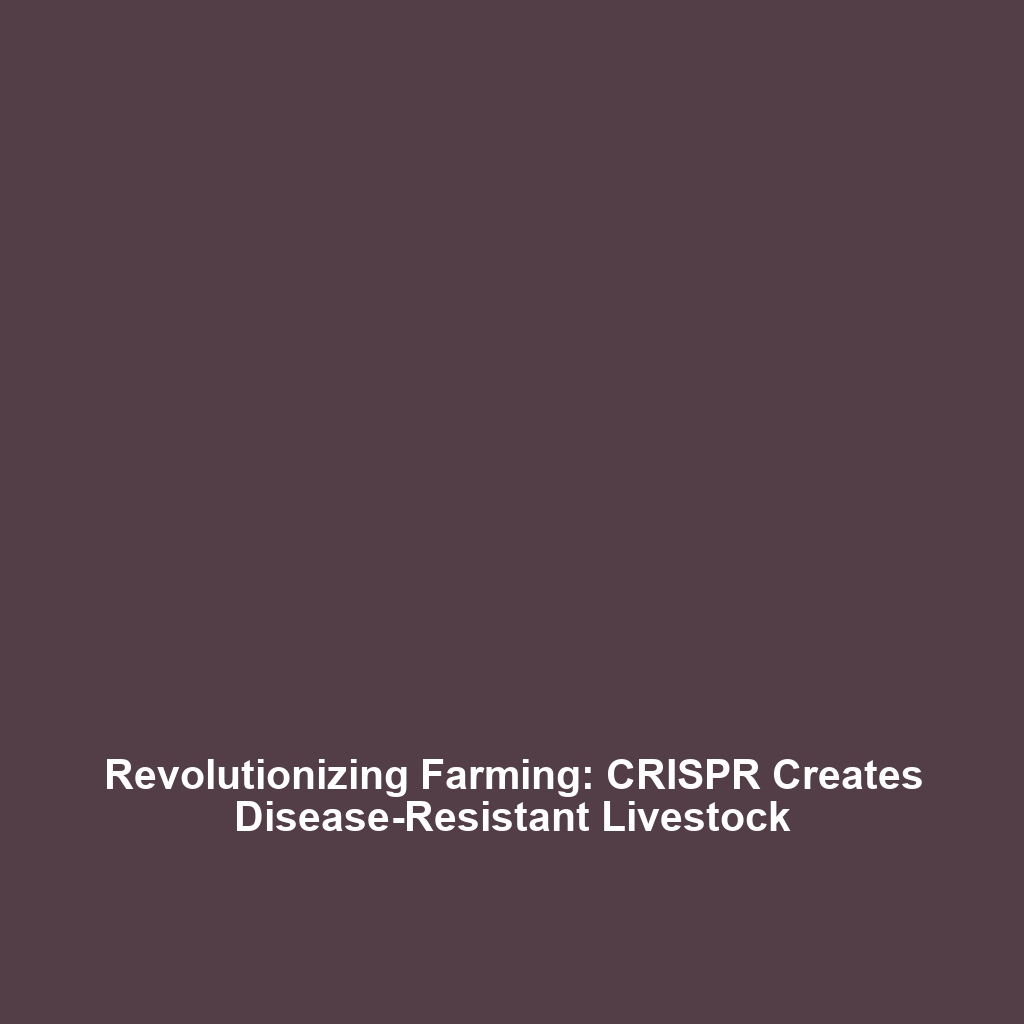Reducing the Need for Pesticides and Fertilizers with Gene-Edited Plants
Introduction
The advent of CRISPR gene editing technology has opened new avenues for sustainable agriculture, particularly in reducing the need for pesticides and fertilizers. This innovative approach utilizes precise modifications in plant genomes to enhance resistance against pests and improve nutrient use efficiency. By decreasing agricultural reliance on chemical inputs, gene-edited plants hold the potential for healthier ecosystems, improved food security, and economic benefits for farmers. Understanding this significance not only highlights the role of CRISPR Gene Editing in modern agriculture but also emphasizes its integration into sustainable farming practices.
Key Concepts
Understanding CRISPR Gene Editing
CRISPR (Clustered Regularly Interspaced Short Palindromic Repeats) is a revolutionary tool that allows scientists to make accurate changes to DNA. By targeting specific genes responsible for pest resistance or nutrient uptake, researchers can create plants that flourish with fewer chemical inputs, effectively addressing the challenge of reducing the need for pesticides and fertilizers.
Principles of Gene Editing
Key principles related to gene editing include:
- Gene Knockout: Disabling genes that make plants vulnerable to pests.
- Gene Activation: Enhancing genes that improve nutrient acquisition.
- Precision Editing: Making targeted changes that do not disrupt other genetic functions.
Applications and Real-World Uses
Real-world applications of reducing the need for pesticides and fertilizers with gene-edited plants are numerous and impactful. For instance:
- CRISPR-edited Rice: Enhanced resistance to rice blast disease, reducing the need for fungicides.
- Gene-edited Corn: Improved nitrogen use efficiency, minimizing fertilizer applications.
- Modified Soybeans: Increased tolerance to pests, reducing pesticide use.
These applications exemplify how CRISPR Gene Editing can cultivate crops with reduced dependency on chemical inputs, leading to environmentally friendly agricultural practices.
Current Challenges
Despite the promising advantages, several challenges persist in the application of gene-edited plants:
- Regulatory Hurdles: Varying regulations across countries complicate research and commercialization.
- Public Perception: Concerns about genetic modifications may hinder acceptance among consumers.
- Technical Limitations: While precision is a hallmark, off-target effects can pose unforeseen risks.
These challenges necessitate ongoing dialogue and research to maximize the benefits of gene editing in agriculture.
Future Research and Innovations
The ongoing research is poised to revolutionize the agricultural sector with innovations such as:
- Multi-gene Editing: Simultaneously editing several genes for comprehensive pest and nutrient management.
- Integration with AI: Using artificial intelligence to predict optimal gene combinations for desired traits.
- Biotechnology Partnerships: Collaborations between public and private sectors to expedite research and development.
These advancements suggest a forward-thinking approach to sustainable agriculture through gene editing.
Conclusion
Reducing the need for pesticides and fertilizers with gene-edited plants presents a significant opportunity for sustainable agriculture via CRISPR Gene Editing. The potential to enhance crop resilience and nutrient efficiency while minimizing chemical inputs underscores its relevance in addressing global food challenges. To learn more about other transformative agricultural technologies and practices, visit our related articles and expand your understanding of gene editing’s role in future farming.


